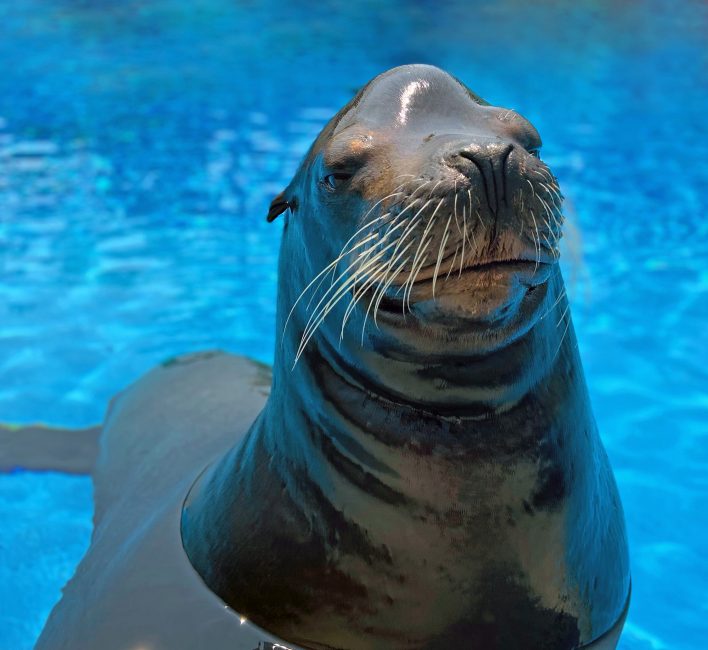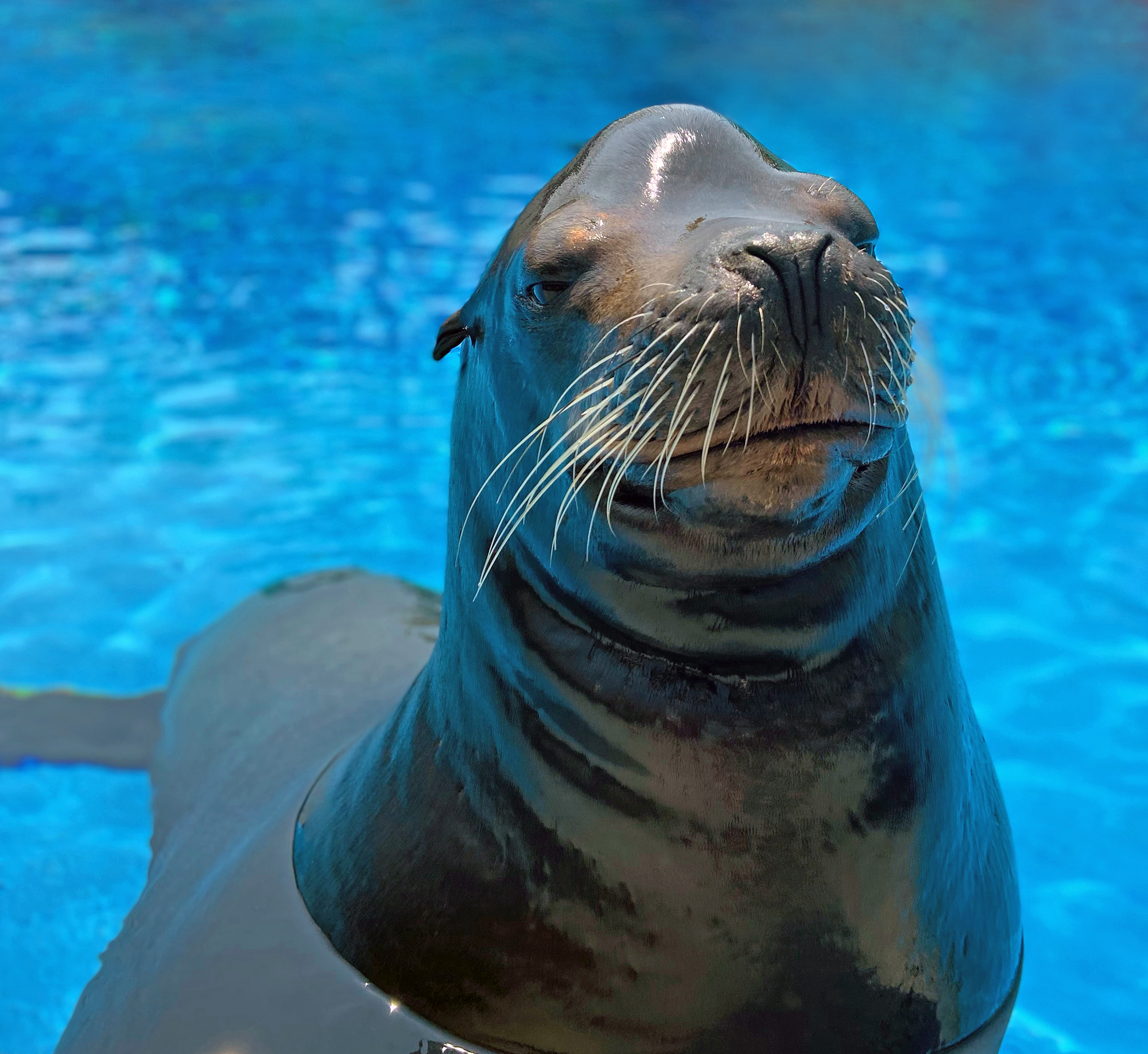
January 18, 2022
How Do Sea Lions Stay Warm in New York City?
- as seen by -
 Sarah Rashed
Sarah Rashed
Marine mammals can generate their own heat and sustain a stable body temperature despite fluctuating environmental conditions. Like all mammals, they are warm-blooded. California sea lions (Zalophus californianus) maintain a core body temperature between 95 and 98 degrees which is only slightly lower than humans. Unlike people, sea lions are capable of swimming in very cold water and enduring freezing air conditions. How are these things possible?
In the wild, California sea lions are found in many different climates, as far north as British Columbia, Canada, and as far south as Baja, Mexico. They have unique adaptations that allow them to maintain their high body temperatures during the winter months at the Wildlife Conservation Society’s New York Aquarium in New York City.
One simple way sea lions can regulate their body temperature is through the increase or decrease of their blubber. In the winter months, they build up thick layers by doubling their intake of fish. Bruiser, our 550 pound 12-year-old male, eats 25 pounds a day during the summer. This amount increases to 50 pounds a day when the weather turns cold (Bruiser in the winter, above). Covering their blubber is a layer of skin and tightly packed fur. Oil is secreted from the sea lions’ skin to help waterproof their fur and keep it mostly dry even while they are underwater.
Sea lions are extremely well adapted for their aquatic life. They have more and thicker blood compared to humans which can store more oxygen. A mechanism that sea lions have is the ability to shut off blood flow to their extremities to keep vital organs warm and oxygenated which aids them in diving to deep depths. They can also do what is called countercurrent heat exchange. As warm blood flows from the heart through the arteries in the animal’s flippers, heat is transferred to the nearby cooler veins that are returning blood to the heart. This enables them to retain heat, rather than lose it.
In addition to these physiological adaptations, sea lions also employ behaviors that further help them regulate body temperature. These pinnipeds can receive and expel heat through a behavior known as jugging. This is where an animal reaches their flippers (which have less fur than the rest of the body), above the water to release excess heat when hot or to absorb heat from the sun when cold (imagine sticking your arm out the window of a car to feel the breeze or catch some rays when chilly).
And lastly, we often find our sea lions snuggled up together for warmth in the winter as they do along the West Coast in the wild.




Leave a Comment